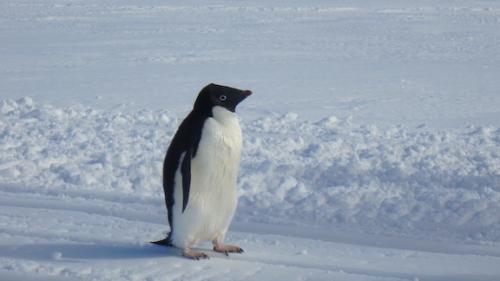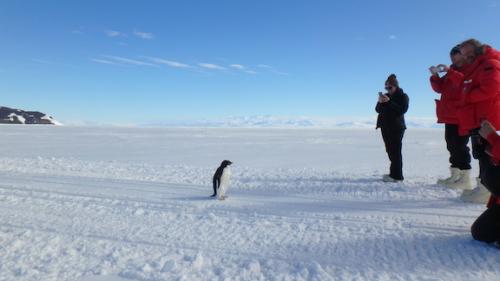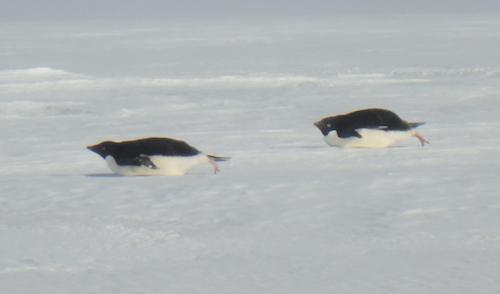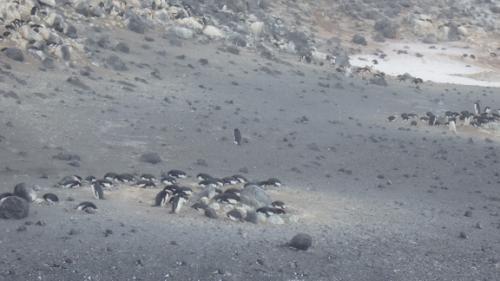
I didn't think I would be as excited to see penguins for the first time as I was a few days ago when a few crossed our path on our way back from diving at Cape Evans. With their tuxedo coloration and wobbly gait, it's almost impossible not to anthropomorphize the teddy bear-sized birds. They seem to have both the stability and the spontaneity of toddlers, moving with clear intention in one direction, stopping, and then taking off on a new heading. With no real predators on land and no evolutionary history with humans, they show no fear sidling up to our group, then seemingly losing interest and wandering away. Exactly what they're doing way out on the sea ice, miles away from the nearest breeding colony, only the penguins know.

Adélie penguins (Pygoscelis adeliae) have several breeding colonies on Ross Island and we occasionally encounter them during our travels. Adélies - named after Adele Dumont D'Urville, the wife of the French explorer - are the most abundant penguins in the Antarctic, numbering close to 4 million animals. While they are found all over the Antarctic coasts, the breeding colonies on Ross Island are the southernmost in the world. For as clumsy and silly as they seem, they are impressive animals. Adélies feed on krill, squid, and small fish and may range all over the Ross Sea, up and down the ice edge. Throughout each year, they follow the advancing and retreating sea ice, chasing daylight North in fall and winter, and South in spring and summer. The migration totals around 8,000mi/13,000km with some individual animals traveling considerably farther.

Every spring, Adélie penguins return to land, gathering in large groups to reproduce. Males make nests of rocks to attract females who lay two eggs at a time. Beginning in November, eggs are incubated for a month before hatching, with parents taking turns sitting on eggs and walking out to the sea ice edge to feed. When the sea ice begins to form again, the chicks enter the ocean for the first time. Even in the day-lit months of spring and summer, the harshness of the climate can be impressive as Team Pycno witnessed during a brief visit to the Cape Royds colony this week. Careful to stay outside of the Antarctic Special Protected Area, we hunkered down in 30kts/55kph of wind-driven snow to observe them in their nests. Even in full ECW(abbreviation) Extreme Cold Weather clothing gear, our group only lasted about 20 minutes before seeking shelter in a windbreak nearby. The Adélies, however, assumed a hunched over posture but otherwise seemed oblivious to the weather, walking back and forth onto the ice, building nests with rocks, or sitting on eggs. When you have to waddle great distances to the ice edge and then take your chances with killer whales and leopard seals just to find food, the snows of an Antarctic spring are no big deal.

To learn more about the Adélies of Cape Royds (and to view a webcam of the colony) visit www.penguinscience.com.


Comments